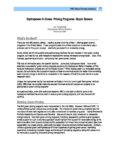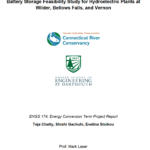There are now 850 electric utilities − nearly a quarter of all the utilities − offering green-pricing programs in the United States. These programs allow the utilities’ customers to voluntarily pay a premium rate for the green product − electricity generated from renewable-energy.
Some utilities identify the specific renewable-energy facilities that are included in their green-pricing program, but most do not, and instead only disclose the various renewable energy types − solar, wind, biomass, geothermal and hydro− comprising their green-power product.
This lack of information about the specific facilities − particularly hydropower dams − from which electricity is sourced for green-pricing programs concerns the Hydropower Reform Coalition (HRC), because hydropower projects are not intrinsically “green.” While flowing water is a renewable-energy source, the cumulative impacts to local environment across the nation from converting water’s kinetic energy to electricity is comparable to the impacts of fossil fuel power plants on a per megawatt basis.
Unless the hydropower facility has received certification from the Low-Impact Hydropower Institute (LIHI), HRC does not consider electricity sourced from conventional hydropower projects to be appropriate to green-pricing programs.


 HRC or member-contributed
HRC or member-contributed